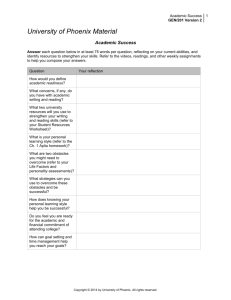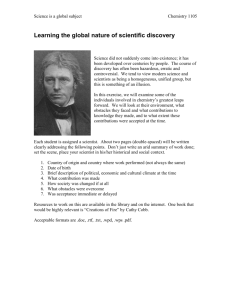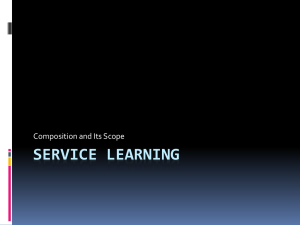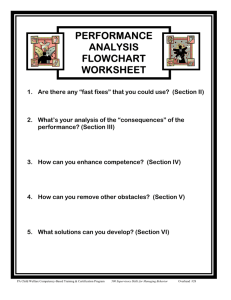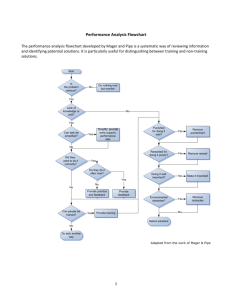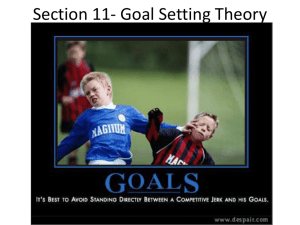Overcoming Obstacles - Australian Blueprint for Career Development
advertisement
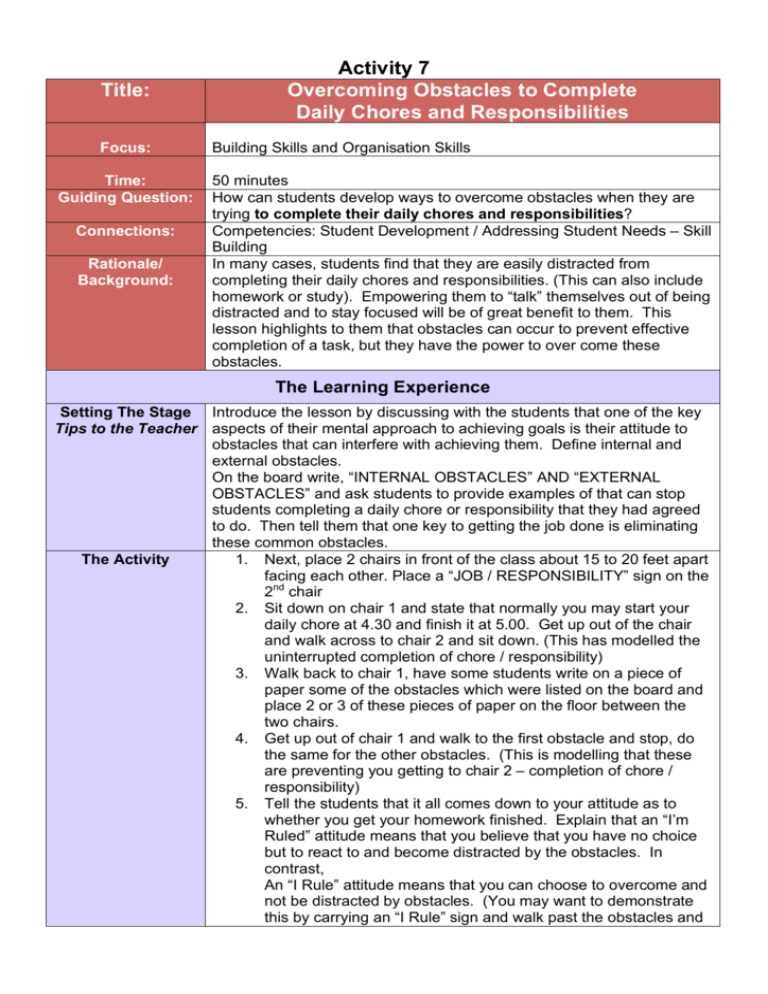
Title: Focus: Time: Guiding Question: Connections: Rationale/ Background: Activity 7 Overcoming Obstacles to Complete Daily Chores and Responsibilities Building Skills and Organisation Skills 50 minutes How can students develop ways to overcome obstacles when they are trying to complete their daily chores and responsibilities? Competencies: Student Development / Addressing Student Needs – Skill Building In many cases, students find that they are easily distracted from completing their daily chores and responsibilities. (This can also include homework or study). Empowering them to “talk” themselves out of being distracted and to stay focused will be of great benefit to them. This lesson highlights to them that obstacles can occur to prevent effective completion of a task, but they have the power to over come these obstacles. The Learning Experience Setting The Stage Introduce the lesson by discussing with the students that one of the key Tips to the Teacher aspects of their mental approach to achieving goals is their attitude to obstacles that can interfere with achieving them. Define internal and external obstacles. On the board write, “INTERNAL OBSTACLES” AND “EXTERNAL OBSTACLES” and ask students to provide examples of that can stop students completing a daily chore or responsibility that they had agreed to do. Then tell them that one key to getting the job done is eliminating these common obstacles. The Activity 1. Next, place 2 chairs in front of the class about 15 to 20 feet apart facing each other. Place a “JOB / RESPONSIBILITY” sign on the 2nd chair 2. Sit down on chair 1 and state that normally you may start your daily chore at 4.30 and finish it at 5.00. Get up out of the chair and walk across to chair 2 and sit down. (This has modelled the uninterrupted completion of chore / responsibility) 3. Walk back to chair 1, have some students write on a piece of paper some of the obstacles which were listed on the board and place 2 or 3 of these pieces of paper on the floor between the two chairs. 4. Get up out of chair 1 and walk to the first obstacle and stop, do the same for the other obstacles. (This is modelling that these are preventing you getting to chair 2 – completion of chore / responsibility) 5. Tell the students that it all comes down to your attitude as to whether you get your homework finished. Explain that an “I’m Ruled” attitude means that you believe that you have no choice but to react to and become distracted by the obstacles. In contrast, An “I Rule” attitude means that you can choose to overcome and not be distracted by obstacles. (You may want to demonstrate this by carrying an “I Rule” sign and walk past the obstacles and 6. Wrap Up Extension do the opposite with the “I’m Ruled”. Discuss what you can do if you are confronted with the obstacles like “If friends telephone, then arrange to call them back” Complete the lesson, by asking if it is harder to overcome internal obstacles or external obstacles and point out that working continually on the change of attitude will help make them more productive in study and homework. 7.1.5 Discussion - School behaviour management - School expectation that students are workers in the school context, that school is their work and they are responsible for their behaviour and their demonstration of personal qualities. If they do not meet these expectations they are aware of the consequences. 7.1.10 Students can have a practice of reflection at the end of each term, considering work styles, attitudes, goal achievement etc and setting new goals for the following term. Students write down on a worksheet the things they think they are good at. Compile a class list of everyone’s strengths. Make a corresponding list of suitable challenges. Play a ‘Match Up’ game. Discuss who would best suit each challenge according to their strengths. Program Review – Reflective Question How many students ask their parents for help in keeping them focused on completing their daily chores and responsibilities? Activity Materials 2 chairs and a few sheets of paper Resources / Materials: Blueprint Career Management Competencies & Indicators 7.1.3 Explore new and creative ways of performing work activities 7.1.5 Understand the meaning of taking responsibility for your own actions. 7.1.10 Examine your experience of performing work activities and determine which abilities and attitudes contributed positively or negatively to the experience. 7.1.11 Improve your abilities and attitudes in order to contribute positively to work experiences (e.g., at home, at school, at work and/or in the community). 8.1.3 Explore what might interfere with attaining goals. 8.1.4 Explore problem-solving techniques 9.1.9 Engage responsibly in each of your current life roles. Teacher’s Notes:
